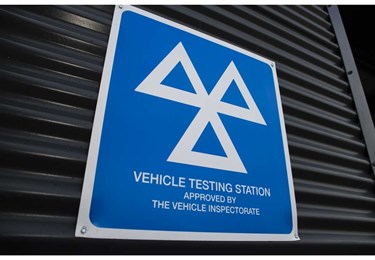Government consulting on MOT changes, again

The Department for Transport (DfT) has launched a public consultation on the future of MOTs in Great Britain, which closes at 11:59pm on 28 February 2023. According to the DfT, “Views are being sought to update MOT testing for cars, motorbikes and vans to ensure roadworthiness checks continue to balance costs on motorists while ensuring road safety, keeping up with advances in vehicle technology, and tackling vehicle emissions.” But the short story is that they are once again proposing to “change the date at which the first MOT for new light vehicles is required from 3 to 4 years” under the guise of saving “motorists across Great Britain around £100 million a year in MOT fees” based on a £40 MOT.
Of course, this is not the first time the subject has come up. On each previous occasion the government has relented after evidence from all sides of the trade and industry sources – not to mention the government’s own data – showed that such a move would be a retrograde step in terms of national vehicle condition as well as road safety.
However, as DfT pointed out in its consultation statement, there have been major developments in vehicle technology such as advanced driver assistance systems (ADAS) including lane-assisted driving which increase road safety. At the same time, the spread of electric and hybrid cars is indeed “rapidly changing the nature of vehicles on our roads” – all since the MOT was introduced in 1960. No one denies either of those points. But the question must be asked why they are arguments to delay vehicle safety checks and their associated maintenance?
Indeed, the fact that vehicles are becoming more complex and that ADAS require calibration after certain mishaps and maintenance works are surely arguments for more maintenance not less. Furthermore, that argument pre-supposes transition to 100 per cent electric vehicles when we all know that the transformation of the national vehicle parc – while already well underway – is a process that will take a couple of decades to complete. And yet, somehow the government is arguing that “ensuring that the UK maintains its world-class record on road safety is at the heart of the proposals.”
As far as the DfT is concerned, any changes to the MOT will be “supported by an information campaign led by the Department for Transport and the Driver and Vehicle Standards Agency (DVSA) to inform drivers of the updates to MOTs and remind them of their responsibility to keep vehicles roadworthy”, adding: “Data shows that most new vehicles pass the first MOT test at three years. With the number of casualties in car collisions due to vehicle defects remaining low.” The government’s analysis reportedly shows the change from 3 to 4 years for the first MOT should not impact road safety. But that contradicts earlier findings on the subject.
The consultation also seeks views on the frequency of MOTs and how to improve monitoring of emissions to tackle pollution to bolster the environmental efficiency of vehicles.
Particulate and NOx emissions tests could be added
Meanwhile, potential new measures include introducing testing of pollutants such as particulate number (PN) and NOx to ensure diesel, petrol and hybrid cars always meet emissions requirements throughout their lifespan.
In addition, the consultation will consider whether electric vehicles’ batteries should be tested to improve the safety and reliability of EVs, if additional measures should be introduced to tackle excessively loud engines, and how the DVSA can continue to crack down against MOT and mileage fraud.
Eric Smith, MOT scheme manager at the UK’s largest fast-fit chain and largest MOT tester, Kwik Fit, was also sceptical of the benefits of delaying the year of the first test and rightly highlights the safety-critical roles of tyres:
“We welcome the fact that the government is consulting on how the scope of the MOT test should be improved in line with new car technology and the changing car parc. However, we don’t believe that delaying a car’s first test beyond three years is a risk worth taking. The government’s own forecasts show that this will lead to an increase in road casualties and also cars running with illegal emission levels.
“The reality is that the annual MOT fee is a very small proportion of a driver’s annual expenditure and the test supports drivers with a timely and regular check on important safety components – not least the condition of tyres. Of the vehicle defects listed as contributory factors to accidents, the government data show that tyres are most common, and tyre condition can be unrelated to vehicle age. Our experience shows that an annual check remains vital in not only improving the safety of our roads but extending vehicle life and reducing drivers’ overall maintenance costs.”
NTDA chief executive Stefan Hay said: “Although the NTDA naturally welcomes the consultation the DfT has launched today with a view to reviewing the MOT and ensuring it is fit for the future, we are concerned, that once again, the idea of moving the first MOT from year 3 to year 4 is back on the agenda. Over the past 10 years the NTDA has consistently, and successfully, argued against this change. It is now for our members to ensure that their voices are heard and we are, of course, urging them to respond to the consultation and submit their own views, as soon as possible. Whatever the outcome, the NTDA will continue to work with the DfT to ensure vehicle safety remains as the forefront of all of our agendas.”
Consultation information can be found here: https://www.gov.uk/government/consultations/changes-to-the-date-of-the-first-mot-test-and-research-into-other-mot-enhancements
Undertaking roadworthiness testing 4 years after a vehicle’s registration is already a reality for those in European countries including Belgium, Denmark, France, Italy, Spain, and Portugal.



Comments